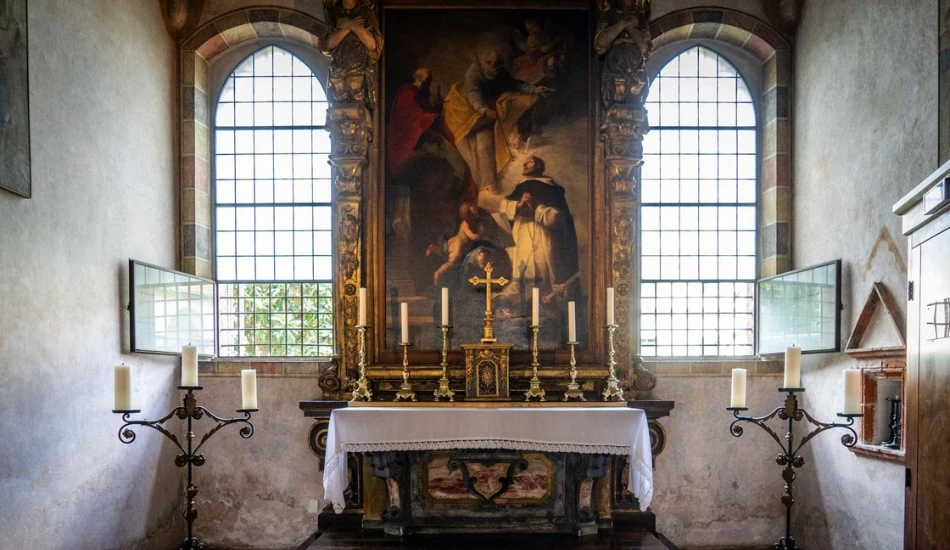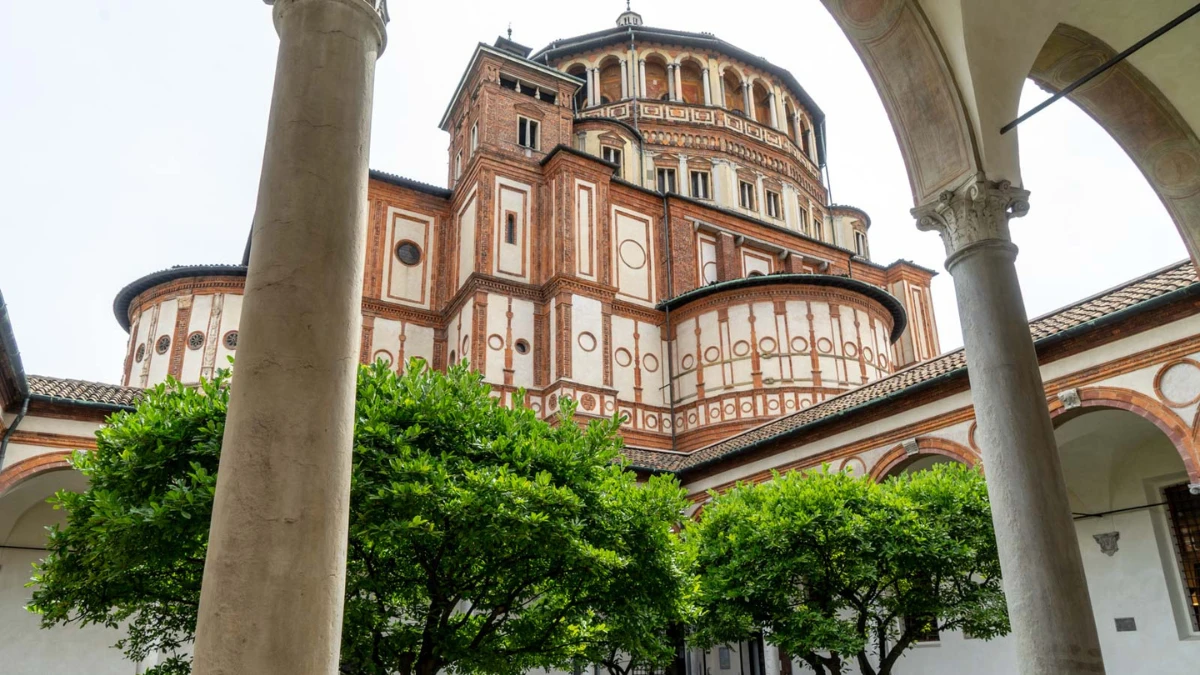When people talk about Santa Maria delle Grazie, they usually mean one thing: Leonardo da Vinci’s The Last Supper.
But what if we told you that most visitors walk out missing half the story?
From hidden chapels to a peaceful cloister that feels miles away from Milan’s chaos, there’s much more waiting to be explored.
This guide walks you through everything you need to see inside the Santa Maria delle Grazie, and why it’s all worth your time.
Quick reference: What you will find inside
Here’s a handy table to help you scan the main highlights easily:
| Highlight | What to Expect |
| The Last Supper | A mix of Gothic nave and Renaissance dome |
| The Crucifixion fresco | Facing The Last Supper, painted in 1495 |
| Church interior | Mix of Gothic nave and Renaissance dome |
| Side chapels | 14 chapels with frescoes and sculptures |
| Cloister of the Frogs | Peaceful garden with quirky bronze frogs |
The main attraction: Leonardo da Vinci’s masterpiece
Leonardo da Vinci’s The Last Supper is the main reason most people visit Santa Maria delle Grazie, and rightly so.
Painted between 1495 and 1498, it captures the dramatic moment when Jesus reveals his betrayal during the final meal with his disciples.
Unlike a true fresco, Leonardo painted it on dry plaster, which has made it incredibly delicate over time.
Only 40 people are allowed in every 15 minutes, making the experience feel exclusive and intimate.
Though your time inside is short, standing before this world-changing mural is unforgettable.
What else is inside the refectory besides The Last Supper
Most people walk in expecting to see just one painting, but the refectory, also known as Cenacolo Vinciano, offers more than you think.
The Crucifixion (South wall):
Opposite The Last Supper is a 1495 fresco by Giovanni Donato da Montorfano. It complements Leonardo’s work with its own powerful narrative. Some believe Leonardo even added portraits of the Sforza family into this fresco.
The frieze (West wall):
A lesser-known gem, a continuous fresco running along the top of the wall, part of the same renovation era. While often overlooked, it ties together the visual story of the room and reflects Ludovico Sforza’s vision.
These features round out the space and elevate your experience beyond one famous mural.
Insider knowledge: Tips to make your visit to The Last Supper unforgettable
RECOMMENDED
Opening hours of Santa Maria delle Grazie
How to reach Santa Maria delle Grazie
Facts about the Last Supper church in Milan
Church interior: Gothic bones and Renaissance beauty

Once you leave the refectory, don’t rush out. The adjoining church is an architectural blend of Gothic austerity and Renaissance elegance.
- 🏛️ Nave: Designed by Guiniforte Solari, it reflects Gothic roots with pointed arches and simplicity.
- 🕊️ Apse and dome: Redesigned by Donato Bramante, a key figure in Renaissance architecture. The dome’s design, the tiburio, became iconic for early Italian Renaissance.
If you’re an architecture lover, the transition between styles inside one church is a visual treat.
Chapels worth seeing and what makes them special
Along each side of the nave, you’ll find seven chapels, each with its own story and artistic identity.
What to look for:
- Frescoes by Gaudenzio Ferrari: A local Renaissance artist whose vibrant colors and religious scenes add emotion and drama.
- The Chapel of St. Catherine: Believed to feature sculptures by Antonello da Messina, a master from Sicily.
- Right-side chapel: Displays a remarkable cycle on the Passion of Christ, also by Ferrari.
These chapels were once privately owned by Milanese noble families. They used them for worship and burials, giving them a deeply personal touch.
The Cloister of the Frogs: peaceful and quirky
Tucked behind the church, the Chiostro delle Rane is one of Milan’s most underrated corners. This quiet square cloister surrounds a small garden and offers a calming contrast to the rest of your visit.
Highlights of the space:
- Shaded walkways and greenery that offer a cool, restful atmosphere
- Four bronze frogs around the central fountain, an unexpected and playful detail
- Ideal for a short break before heading back into the city
Few visitors take the time to explore it, which makes this peaceful courtyard feel like your own secret discovery.
Duomo di Milano: Since Milan Cathedral is just a 20-minute walk from Santa Maria delle Grazie, some tourists plan to visit both on the same day. Find out how to go from Di Milano to Santa Maria. If you don’t have much time and can only visit one, find out why Santa Maria delle Grazie is a better choice than di Milano.
Planning your visit
Tips to plan your visit smartly
Here’s a list of must-knows that can save your day:
- Church entry: Free for everyone, no ticket needed.
- Refectory access: Ticket required, book months in advance.
- Photography: Strictly prohibited inside the Last Supper room.
- Best time to visit: Early morning slots are quieter. Avoid weekends if you don’t like crowds.

